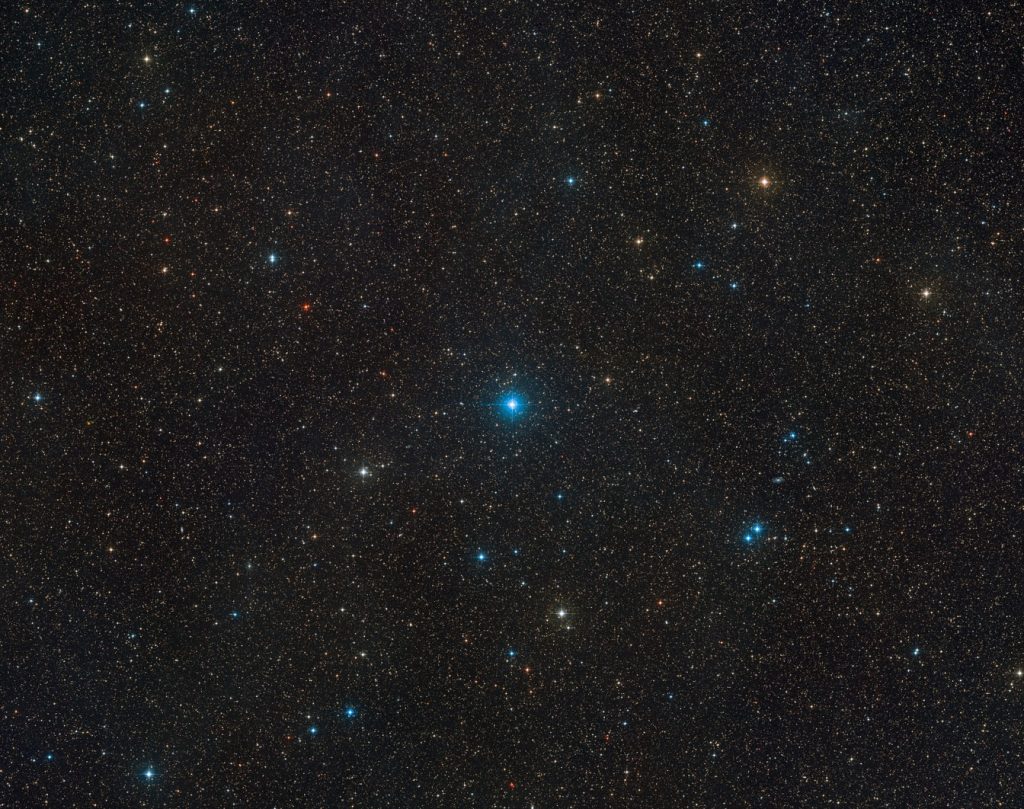In the night sky, far south of the equator, there’s a curious collection of faint constellations embedded in the tapestry of stars.
And this corner of sky is hiding something truly remarkable.

They do not bear the names of myths and legends, because the ancient Greeks couldn’t see them from the Northern Hemisphere.
These constellations were charted later, in the mid-18th century, by a French astronomer who sailed south, and he named them in honor of some rather mundane objects of his own time: a telescope, a microscope, a pendulum clock, an easel, various other tools and chisels.
“It looked like somebody’s attic!” an American astronomer later remarked. And just like a cluttered attic, this corner of sky has been hiding something truly remarkable.
Astronomers have discovered a black hole in one of the constellations, the suitably named Telescopium.
At just 1,000 light-years away, the black hole is closer to our solar system than any other that astronomers have found to date.
A thousand light-years might sound distant to us, but in cosmic proportions, it’s very close. “On the scale of the Milky Way, it’s in our backyard,” Thomas Rivinius, an astronomer at the European Southern Observatory (ESO) in Chile who led the new research, told me. “Almost on our doorstep.”
For comparison, consider some of the best-known black holes in astronomy, the ones usually intriguing enough to make headlines. The black hole at the center of our Milky Way galaxy is more than 25,000 light-years away, and the black hole that astronomers captured in unprecedented detail last year lies 55 million light-years away, in another galaxy altogether.
This one, by contrast, is so close that, on a clear night in the Southern Hemisphere, far from light pollution, the pair of stars that orbit the black hole can be seen with the naked eye. From here, the stars appear as a single pinprick of light.
So, if this black hole is, at least in astronomical terms, right there, how has it eluded astronomers for so long?
Well, there’s the obvious: Black holes are invisible.
The way to find the darkest points in the universe is to look for luminous clues around them.
Most of the black holes that astronomers have found in our galaxy — a few dozen — were spotted because they were devouring nearby stars, pulling material into their maws and past a point of no return.
That process is so luminous that not only can black holes be detected from Earth, but they’re actually quite difficult to avoid. “Sometimes they become the brightest objects in the sky,” says Erin Kara, an astrophysicist at MIT who studies black holes and was not involved in the latest discovery.
In fact, some black holes emit so much radiation while they feed that telescopes can’t look at them without frying their electronics, Kara says.
Don’t worry
Despite its proximity to Earth, the black hole is no danger to us. It’s a blip compared to the one at the center of our own galaxy, which has a mass 4 million times that of our sun.
And, as far as humanity is concerned, it’s not close enough to pose any kind of threat. “One has to be very close to it to be sucked in,” Rivinius said.
There are many more like it. Black holes are the by-products of aging stars that exploded in spectacular fashion at the end of their lifetime.
Such supernovas can, briefly, outshine entire galaxies, but nearby, companion stars can survive the cataclysm, which explains why HR 6819 still exists.
Astronomers estimate there are hundreds of millions of black holes in our galaxy. The latest discovery gives them hope that there are others lurking around nearby stars, perhaps even some of the most familiar points of light in our sky.
“It’s important to emphasize that it’s the closest we’ve found yet,” says Sera Markoff, an astrophysicist at the University of Amsterdam and a member of the team that produced last year’s historic black-hole photo.
There might be closer ones! Does this mean we could be in danger of disappearing, of being sucked in?
Meanwhile the first fast radio bursts has been detected coming from inside our galaxy:
More space news on Strange Sounds and Steve Quayle. [The Atlantic]











